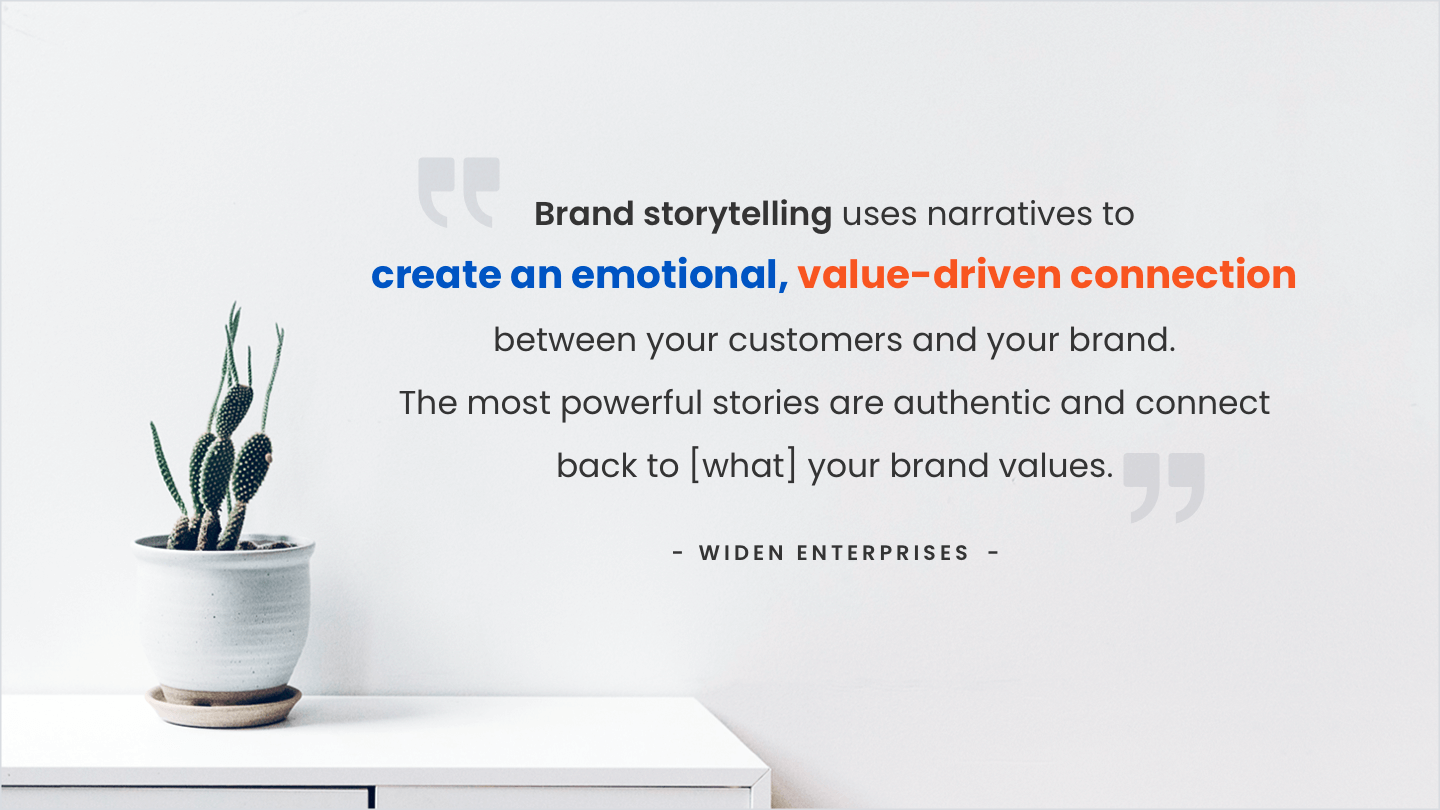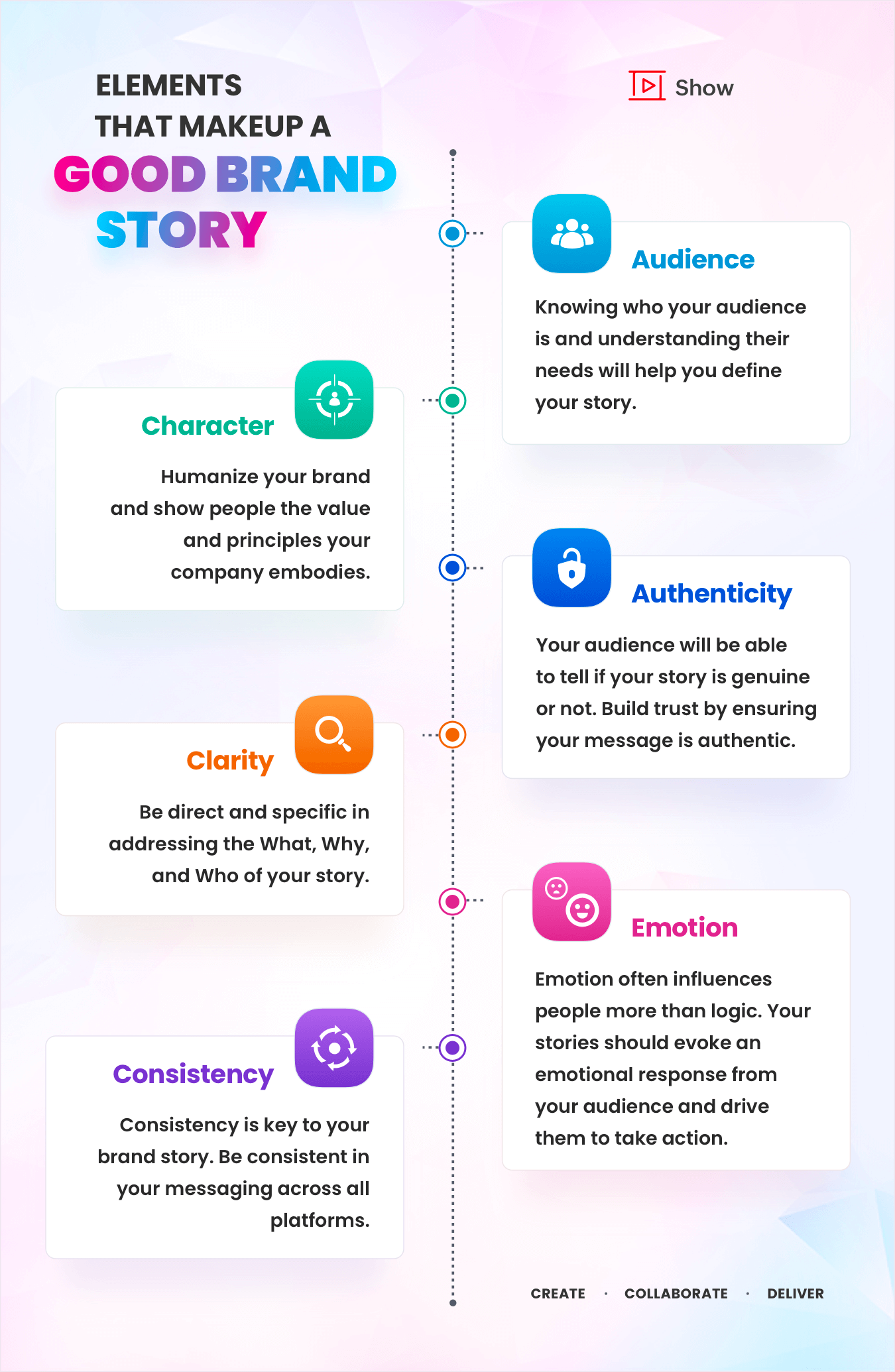- HOME
- Business & tech
- Brand storytelling: How brands use storytelling to shape their identity.
Brand storytelling: How brands use storytelling to shape their identity.
- Last Updated : August 31, 2022
- 1.8K Views
- 5 Min Read

The art and power of storytelling have a huge influence on human behavior. They impact the decision-making process and push audiences to take desired actions. They have also become an important part of marketing and advertising. In this blog, we will analyze the importance of brand storytelling and how it shapes a company's identity.
So, what is brand storytelling?
It is the use of authentic and emotional stories to drive growth and foster customer loyalty. Put simply, a brand story is a narrative that helps you connect with your customers to inform, educate, entertain, and persuade them. This approach is gaining momentum among marketers, as it taps into the basic human need to connect through stories.

Why is storytelling important for brands?
On average, customers view 5.3 trillion ads each year. The best way to capture your audience's attention in this ocean of information is to show them content that sticks. This is where storytelling comes into play. Here are some reasons why they are crucial:
- Humans are wired to tell stories: Great stories create an empathetic bond with the audience. They build an emotional connection, making your content memorable, and ensuring all key marketing messages are consumed and cataloged in the mind.
- A powerful story compels action: People value a product with a story more than a product without one. Tell a story that highlights why your product is unique. Your brand story should have a compelling call-to-action to let people know what steps to take next.
- Stories showcase a human element: In marketing, stories are used to humanize brands and make them more relatable. It is important to present your company like a person to convey its values and principles. Build a brand character and express your core message through your company's logo, voice, and overall marketing strategy.
"55 percent of consumers who love a brand’s story are willing to make a purchase." - MarketSmith Agency
Before you can implement a storytelling strategy, you need to understand the different elements that contribute to a good brand story. Let's take a look at them:

Here are some examples of how famous brands have implemented storytelling in their marketing strategies:
- Apple - Think Different: Apple revolutionized the marketing industry with its Think Different campaign. The brand creates a compelling narrative and tells stories that intrigue. The goal behind this campaign is to convey the idea that you always had to be a little different to buy an Apple computer.
- Nike - Just Do It: Nike's iconic Just Do It campaign launched 30 years ago. The campaign featured famous athletes talking about their accomplishments, desires, and emotions during their journeys. The campaign was built around the concept of self-improvement and overcoming obstacles—and that resonated with the sports community.
- Spotify - Music for every moment: The campaign focuses on using data to help provide listeners with music for every moment. Their messaging aims to build a relationship with their target audience, mainly Millennials and Gen Z.
Brand storytelling has also become very popular in presentations for every industry. This type of storytelling serves a specific purpose based on the presentation's objective. Read this blog to learn how you can use the art of storytelling in your presentations.


